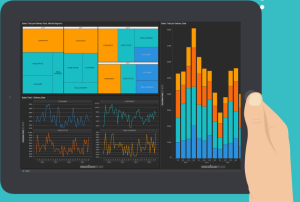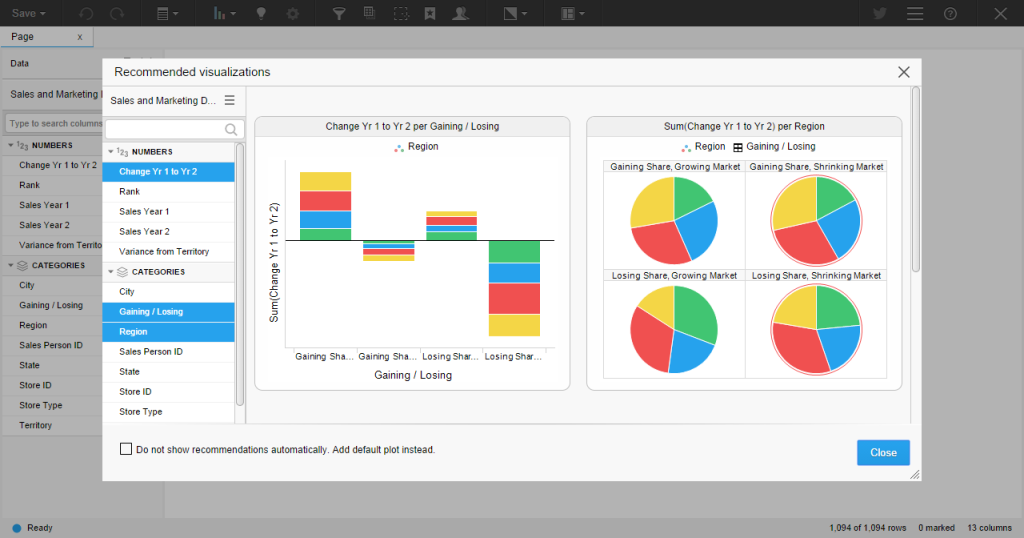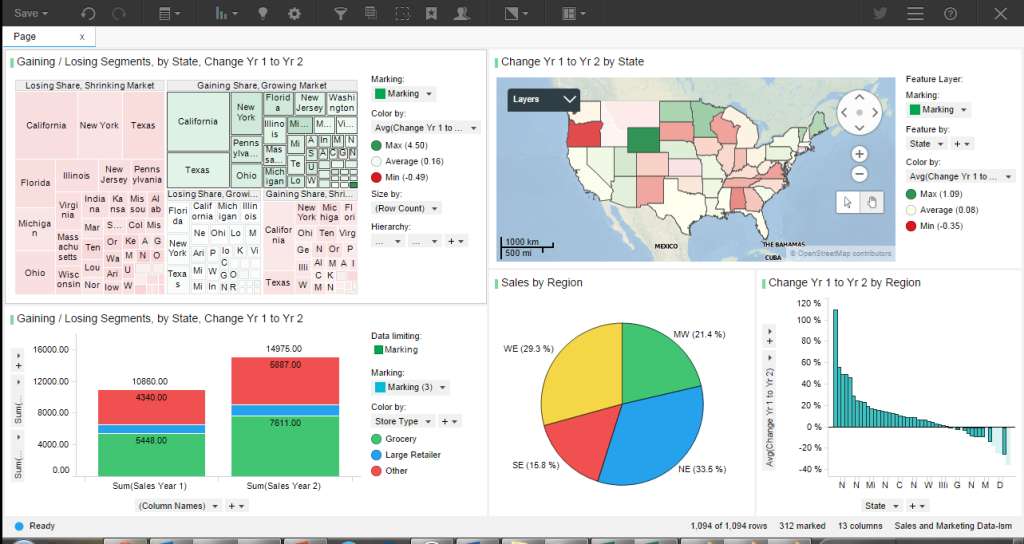
Spotfire: Now With Automated Vizzes

Figuring out how best to display a piece of data can be a big part of the big data analytics battle. When is a pie chart best, and where would a funnel graph work better? With the new Recommendations feature that TIBCO added to its Spotfire Cloud offering today, the software will automatically select a visualization for the user.
According to TIBCO, the visualizations generated by Recommendations provide “built-in best practices” and help to eliminate the trial and error of selecting a particular visualization. The software will analyze a customer’s data before suggesting the particular visualization that best matches the type of data and the kind of analysis being performed on it.
All users have to do to use Recommendations is select a column of data, and the suggested viz or vizzes automatically show up on the screen. The more columns that the user adds, the more complex and layered the vizzes get. The idea is that, by showing users how their data appears in different vizzes, they’ll get a better understanding of what’s there.

As you select different data, Recommendations automatically selects new visualizations appropriate to your chosen data
It’s about providing a “fast and intelligent jumpstart” to the business of telling a story through data analytics, says Brian Gentile, senior vice president and general manager of TIBCO Analytics. It lets users “focus more on guiding business decisions and less on selecting the ideal chart, filter, and perspective,” he adds.
Spotfire Cloud is the software-as-a-service (SaaS) version of TIBCO’s flagship analytics tool. Users get everything they need via a Web browser, and aren’t required to install anything on their desktop (although the enterprise version allows customers to use the Windows-based version of Spotfire if they choose).
Users of the basic $20-per-month edition of the product, called Spotfire Cloud Personal, get to choose from the following vizzes: bar charts, line charts, tree maps, cross tables, combo charts, pie charts, scatter plots, and tables. Those who step up to the enterprise version, called Spotfire Cloud Work Group ($300 per month), get additional vizzes, including 3D scatter plots, heat maps, parallel coordinate plots; summary tables, and map charts.

At any point that you see something you like, just select, and Recommendations adds it to your dashboard.
The basic version has the standard data connectivity you would expect, including support for text, CSV, Excel and Access files, as well as some you might not expect, like support for ESRI and SAS files. The enterprise version comes with connectivity to big data sources like the Hadoop distros from Hortonworks, Cloudera, and Pivotal, as well as analytic databases from Terradata, HP IBM, Oracle, and SAP. It also supports advanced analytics, such as K-means clustering, box plots predictive modeling, and an integrated R engine.
Related Items:
Fast Data Specialist Tibco Goes Private
In-Memory Data Grid Key to TIBCO’s Strategy
TIBCO Shines Light on Spotfire Concepts



























